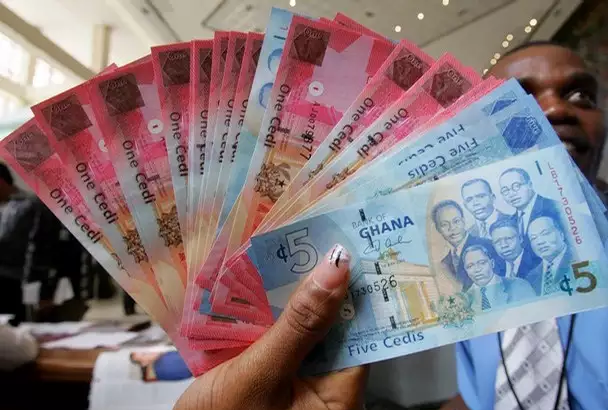
What does the economy say?
The economy says a lot, doesn’t it? Well, to the uninitiated the feeling always is that the financial world, generally, is crammed with jargons and shrouded in secrecy to the extent that understanding what actually happens in that “world” could be a tall order.
Advertisement
A tall order it might seem, but the truth is, whereas the shenanigans of the financial world sometimes throw up bubbles of confusion because of the seemingly lack of universal agreements on cause and effects on a number of issues due to the various “schools of thoughts”, there is no mystique or closed ends in terms of knowledge in the financial world.
Rather, the world of finance and therefore economics is as mysterious as we would like to have it be, so to avoid any further confusion let us say, simply, that the more that is known about a subject, the less controversy we would have on it and that our understanding of the world of finance mirrors our reflection of it and what happens around us.
On Monday July 18, the Monetary Policy Committee (MPC) of the Bank of Ghana (BoG), after its 71st MPC meetings, decided to maintain the policy rate at 26 per cent.
That, the announcement did not come with much surprise to many is an indication that the financial market largely expected the Bank to maintain the rate, at the most extreme end of its decisions that day. Of course, when expectation is matched the way it happened on July 18, decisions become satisfying for everyone.
Policy Rate
So what does it all mean to say policy rate has been maintained or tightened further? Well, monetary policy rate is in indicative rate that guides lending in an economy and therefore the tool that a central bank would use, under certain conditions, to steer the economy towards a desired or expected target. Broadly, the policy rate as a guide for all other market interest rates, also guides commercial banks in their interest rate setting. Again, that rate also indicates the rate at which commercial banks can borrow from the central bank.
Let us consider this example: HMD Bank, a commercial bank of repute lends money to Adjoa, who is into the bakery business. Adjoa secured an amount of 100 cedis at a rate of two per cent per annum. The money was borrowed by Adjoa in order to fulfill a large order for pastries that was above her normal operating capacity. She is expected to pay back the principal and the interest within a year, at the most.
How it works
Now, let us look at how this will play out. Adjoa will pay two cedis interest over the 12 months period if all conditions stayed the same, and assuming she took the loan at a fixed rate of interest.
However, if the loan was on a variable rate of interest, it means that a change in the interest rate will most likely affect the amount she has to pay during the tenure of the facility.
So, practically, if the prevailing policy rate in Adum Country, where HMD Bank is located, was one per cent, and the Bank, factoring in its cost of providing banking services charged two per cent for loan facilities, then it means that if the policy rate moves up to 1.5 per cent, the likely hood that HMD Bank would move up its rate is high. That is how, in simple terms, the policy rate works.
However, it must also be mentioned that it isn’t always that the commercial banks’ retail lending rate move in lockstep with the policy rate of the central bank. Commercial banks may act otherwise, depending on a number of factors. Ok!
Now let us look at what informed the BoG’s decision to maintain the policy rate at 26 per cent on July 18.
BoG’s decision
First off, the BoG’s decision to maintain the policy rate has a far broader implication on the economic direction than just the provision of a snapshot figure-26 per cent policy rate, that is it! Not at all! Indeed not, because the explanation to that snapshot figure offers hope and excitement on the economy.
So, this is part of the explanation to the decision by the Central Bank, and perhaps a further reason why the optimism built over the past few months about an economic rebound is yet to wane off.
According to the Bank, the last MPC meetings, which concluded in May “noted that headline inflation had declined from 19.2 percent in March to 18.7 percent in April”.
But, a “five percent upward adjustment in the ex-pump prices of petroleum products and its pass-through effect on prices”, moved the headline inflation up slightly to 18.9 percent in May”. But the good news, however, is that by June, inflation had moved to18.4 percent.
Inflation
“These observed trends in inflation over the first half of 2016 have largely been influenced by increases in the prices of petroleum products, utility tariffs and food prices. Since most of these adjustments are cost push in nature, the current monetary policy stance is deemed appropriate, and hence maintained”, the central bank maintained.
The next question, I am sure, is this: Why is it that inflation is the target?
Well, inflation, identified largely as the worst of all economic evils attacks anyone and everyone. And the fact is, where incomes are not indexed by the state or employers against the consequences of inflation, the ills of inflation translates into household despair and general economic gloom.
Even where the indexation exists, those who pay for that also suffer as well. So, the relationship between rampant inflation and increasing public debt can be established always, forcing price stability to be the target of central banks.
Overall, the typical central bank is interested in sustained economic growth and development and the monetary policy direction serves that useful purpose.



